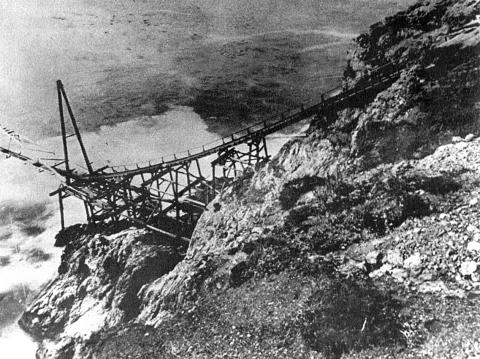Perhaps the most human poem he has written
— Granville Hicks, The Nation [1]
… the best thing I have yet written.
— Robinson Jeffers [2]
When Robinson Jeffers was working on Thurso’s Landing, he appeared to think that he was working on his masterpiece, but don’t they always? Hadn’t he spoken similarly about The Women at Point Sur? By 1938 he didn’t seem to be so sure that Thurso was that fabulous. He wasn’t sure whether it was any better than Cawdor, though he did choose Thurso over Cawdor for his volume of Selected Poetry.
Thurso’s Landing marks the point in the Jeffers literary catalog where consciousness becomes the central concern. Consciousness would remain crucial to Jeffers for nearly ten years to come, embodied in the poems Margrave, Give Your Heart to the Hawks, Return, Rock and Hawk, and Mara. That being said, Thurso’s Landing also stands out as one of Robinson Jeffers’ great hawk poems.
Reave Thurso is such a natural man he seems unconscious. Knowing Jeffers, one might say that Thurso is rather hawk-like, but this predator is dogged and persistent as a forest hawk that crashes through a thicket after its prey, whether pursuing a wounded deer or his estranged wife.
The hawk-metaphor is taken far enough by Jeffers to make Reave Thurso the one who controls squirrel populations:
“Nobody else / Seems to have kept them down, in my absences. Without some killing they’ll breed armies in spring.” [3]
He is strong of body and of will, and in an unreflective sense, good. Though he is quick to kill a creature without a second thought, whether it be in laying out poison for ground-squirrels, hunting deer, or mercifully dispatching an old dog, yet he goes out of his way to protect old redwood trees from harm. Though there are clearly Freudian mechanisms at work in Thurso’s cruelty, what he does he does without doubt or introspection. This torments his very human, conscious and indecisive wife Helen, and she responds very badly. Helen appears to represent humanity in this story, whereas Reave is a picture of inhuman natural strength. Helen spends most of the story tormenting Reave out of fear of his strength and “inhumanity,” but at the end she finally gains an appreciation and sense of loving empathy for this inhuman man.
As an aside, there might be a hint of the brothers Agamemnon and Menelaus in Thurso’s journey to recover his wife Helen.
Thurso’s doom is to be wounded by what is perhaps best described as an accident, but he pushes his luck by first altering a demolition project to preserve some redwood trees, and then by wandering into the path of danger to make sure his insane brother Mark is out of harm’s way. After his fragile human frame is snapped by the sprung cable, Thurso resembles that “hurt hawk” that Jeffers celebrated and mourned several years before. Thurso describes himself in similar terms:
“If you lived in the hell of pain and impotence / That I inhabit, …”
The great strained shoulders began to fail, the hooked fingers … [4]
In the end Helen, who has spent so many years failing to understand this great beast of a man, kills him with love and mercy, just as Jeffers had previously given his wounded hawk “the lead gift;” and just as Fera Martial had played the part of a caged eagle in Cawdor, so Reave Thurso plays the part of “hart hawk.”

Bixby Landing
Geographically and historically, Thurso’s Landing is partly about the construction of California Highway 1. The world famous Bixby Creek Bridge was completed in the very same year that Thurso’s Landing was published, hence the presence of road crews—and the active involvement of a road worker—in the story. The story takes place at the end of a time when there was no highway along the coast between Bixby Creek and Point Sur. One supposes that the bridge, in Jeffers’ semi-fictional geography of Big Sur, might have been named Thurso Bridge.
Thurso’s Landing represents a turn for Jeffers toward naturalism, that is to say the kind of naturalism espoused by Jack London. Up to this point, the automobile had been largely hidden from Jeffers’ literary landscape, in spite of the fact that the automobile had in part created the town of Carmel-by-the-Sea as it existed when Robin and Una Jeffers first arrived. In 1929, a car appeared in The Loving Shepherdess, but as little more than a symbol of decline: a toy for spoiled children.[5] From 1932 to 1941, however, the automobile would be accepted as part of Jeffers’ world.
In a later poem Mara (1941), the bridge and the new highway are part of the landscape when the story takes place, and they each play a passing part in the story itself.
[1] Vardamis, Alex A. The Critical Reputation of Robinson Jeffers. pg. 87
[2] Alberts, S. S. A Bibliography of the Works of Robinson Jeffers. 1933. pg. 72. Cited by Beers, Terry. ‘Telling the Past and Living the Present: “Thurso’s Landing” and the Epic Tradition’ in Robinson Jeffers: Dimensions of a Poet, pg. 48.
[3] Section XIII; CP 2:228
[4] Section XVIII; CP 2:259
[5] The Loving Shepherdess, Section VI; CP 320–21
Links
Harrowed Marrow, Time, April 4, 1932